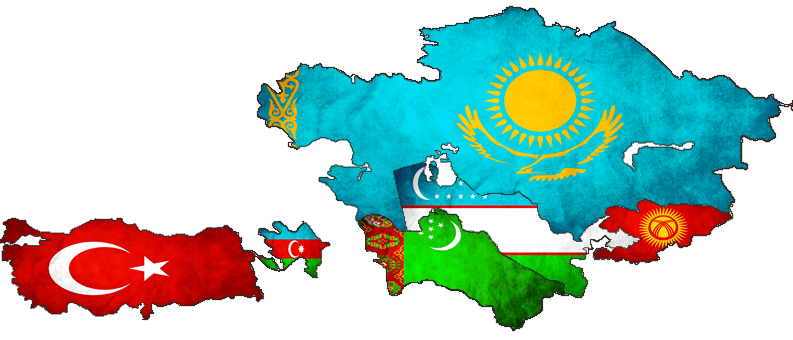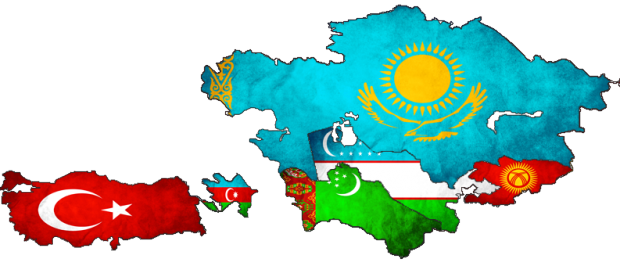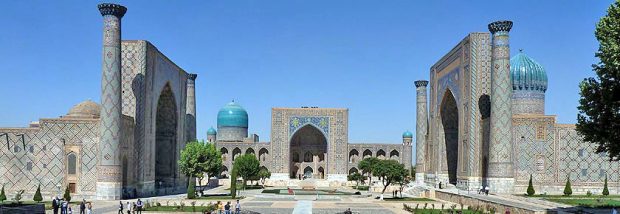
Embracing Cultural Approaches to the Integration of Central Asia
 Many things have been said by local and foreign experts about the importance or necessity of integration in Central Asia. One should underline several factors could be used in national or inter-regional politics, aimed at new rapprochement in the region. First, we would like to point out common cultural and humanitarian values, and historic heritage as a basis for any future concepts or programs of regional integration. Second, economic approach, including coordinated transport, energy, trade policies could be the material basis for any joint technical projects. These two approaches are closely interconnected with each other. The effect of this rapprochement could be further developed through direct social relations between the Central Asian nations. We will talk about the first cultural approach in this paper.
Many things have been said by local and foreign experts about the importance or necessity of integration in Central Asia. One should underline several factors could be used in national or inter-regional politics, aimed at new rapprochement in the region. First, we would like to point out common cultural and humanitarian values, and historic heritage as a basis for any future concepts or programs of regional integration. Second, economic approach, including coordinated transport, energy, trade policies could be the material basis for any joint technical projects. These two approaches are closely interconnected with each other. The effect of this rapprochement could be further developed through direct social relations between the Central Asian nations. We will talk about the first cultural approach in this paper.
Historically, there were several integration projects in the region like Turkistan, Central Asian Union etc. Unfortunately, attempts to establish a common state or confederation of states failed in the region thus far. The problem is that the approaches chosen were unrealistic; besides, interrelations of nations were subject to profound changes during 20-21th centuries. Once co-existing in a relatively harmonious environment with its own checks and balances system, the nature of relations among the Uzbeks, Kazakhs, Tajiks, Kyrgyz and Turkmens have shifted from completing and constructive to reactive and exclusive as a result of hardline Soviet national policies. The nation-building process in the newly established Turkic-speaking and not speaking republics has spontaneously developed under pressure of quickly-changing time, domestic, and external circumstances and lack of state-building experiences.
As a result of this lack of consistent ideas, every state in Central Asia sought to develop its own official ideology of «successor of great empires» and «unique model» of statehood. In fact, there are more similarities, than differences among the nations of the region although well-known models of Central Asian authoritarian regimes, inherited from the Soviet system, disintegrate the region. Unfortunately, the Central Asian nations supported the ideological models, which deny, then complete each other. Every state tries to demonstrate that its history or nation is the oldest or strongest in the region. Only conflict experts know to what these official contradictions might lead to. The challenge here is that there is no whole picture when Uzbek or Turkmen looks at his own history from his narrow nationalistic point of view, which undoubtedly could be a part of a neighboring nations’ historic heritage as well. For instance, how could we identify the specific ethnic background of Al-Farabi, Ibn-Sina, Yassawi and other prominent figures who lived here many centuries ago?
 At this impasse, one should emphasize historic, cultural, linguistic and civil togetherness of the region as a whole, complex system of values and experiences. Stressing on the commonality of the cultural heritage of Central Asia helps to build a bridge to be used for integration with the rest of the world, including holding of a good relationship with neighboring countries like Russia. Maximalist ideologies like Panturkism or exclusive, hard-style nationalism only threaten others and harm the large-scale, natural process of integration into the world. As maximalists always lose and marginal ideas fade, we need more embracing, consistent, flexible ideas.
At this impasse, one should emphasize historic, cultural, linguistic and civil togetherness of the region as a whole, complex system of values and experiences. Stressing on the commonality of the cultural heritage of Central Asia helps to build a bridge to be used for integration with the rest of the world, including holding of a good relationship with neighboring countries like Russia. Maximalist ideologies like Panturkism or exclusive, hard-style nationalism only threaten others and harm the large-scale, natural process of integration into the world. As maximalists always lose and marginal ideas fade, we need more embracing, consistent, flexible ideas.
In this context, we may look back at our history, especially, the glorious “golden era” of Eastern Renaissance, when Central Asia was one of the main cultural, intellectual and trade centers of the continent. The so-called Arab Renaissance, in fact, was mainly a mix of Turkic, Arabic and Persian heritages, as Frederick Starr said in his famous book about Muslim enlightenment. Starting from the 8th century, thousands of scholars like Al-Hwarezmi, Al-Farabi, M.Qashqari from Turkistan emerged in different spheres of science (hadith, philosophy, logic, astrology, chemistry, math, physics etc.). Turkic peoples, located along the Silk Road between medieval China, India, Iran, Arab, and the West were at the center of trade roots, perceiving different ideas, knowledge, arts, philosophies, and religions. Thus, Central Asia, being at the heart of “medieval globalization” was fully open to the most progressive ideas of that time, including translated classic heritage, cultures, technologies, critical thoughts.
The Turks, former conquerors of Eurasia, were not barbarians as they were deliberately described in some books; on the contrary, they brought morality, justice, and humanism to other places.
The basic reason why Central Asia succeeded in being a cradle of civilizations and science, generating new ideas and later influencing Europe, was linked to a free-thinking tradition of Central Asian, Turkic peoples, which avoid formality, promote pluralism, and embrace different cultures. Al-Maturidi doctrine was one of the schools which supported tolerance and multiculturalism. Central Asia was a place where justice and humanism, Aristotle and Sufism, philosophy and revelation coexisted; bringing new fresh ideas to the intellectual and spiritual world.
Later, formalism and religious dogmatism won in the region as skepticism, pluralism, open-mindedness, and critical thinking started to disappear from intellectual life. Today, what we see in the Muslim world such as radicalism, extremism, and terrorism is a triumph of formalism and dogmatism, as a result of lack of consistent criticism. So, what were the dynamics of that vibrant integrative, embracing philosophy that once flourished in Central Asia? If we could rediscover the secrets of that dynamism, we could find again our place and the way to the integration into the world.
Instead of denying each other, or nationalizing the common historic and cultural heritages of the region, Central Asian nations must rediscover in themselves new sources of positive ideas and energy to renew their updated approaches, and then develop regional integration and rebuild Central Asia. In this connection, one should not stress his “Turkicness” or ethnic nationality. And the importance of formal approaches should not be exaggerated; instead, we must prefer synthesis of cultures and nations. We would be quickly integrated into the rest of the world, if we, Central Asians, could emphasize the basic values that we all agree upon objective principles like dignity, justice, morality, and human rights, instead of eagerly promoting our own limited nationalist agendas and ignoring neighbors’ needs and concerns.



